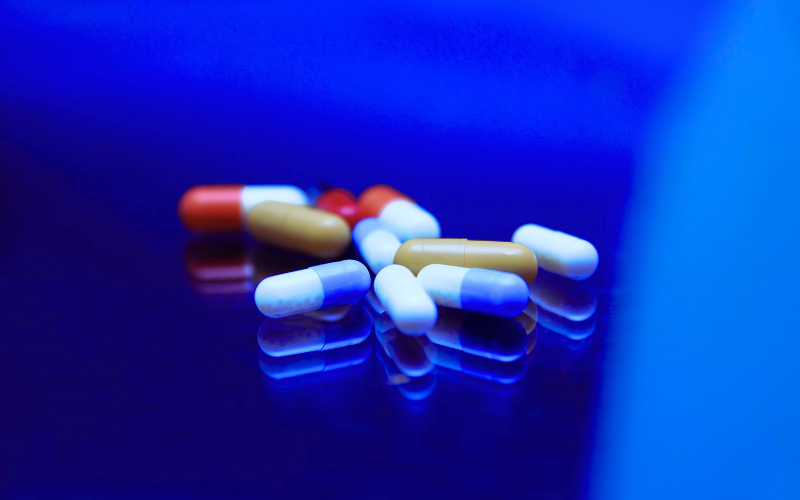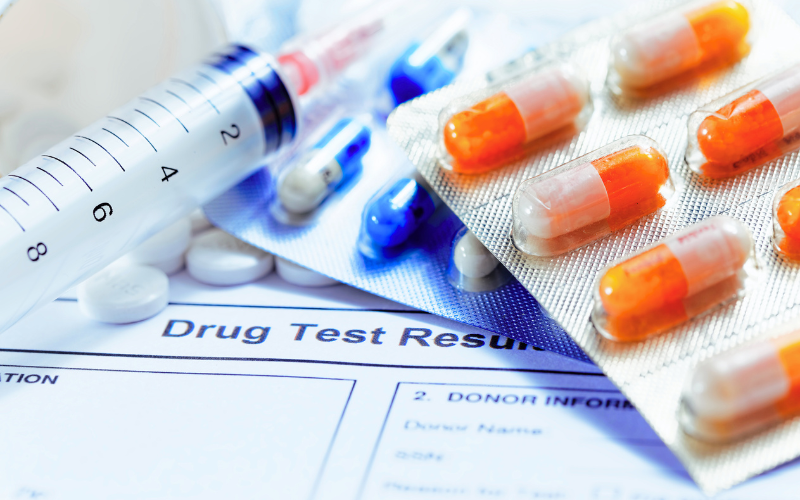The field of occupational health and safety is currently experiencing a seismic shift, with technology playing a pivotal role in transforming traditional approaches to employee wellness. As businesses across the globe embrace innovations, from wearable devices that offer real-time health and safety monitoring to advanced analytics tools pinpointing potential hazards, the landscape of occupational health is being redefined. These advancements not only enhance efficiency and accuracy but also pave the way for more proactive and preventative measures in workplace safety.
Amidst this technological revolution, fingerprint sweat drug testing emerges as a standout innovation, aligning perfectly with the trend towards more sophisticated, non-invasive methods of monitoring and ensuring employee well-being. This method exemplifies how technology can be harnessed to serve the dual goals of maintaining a safe work environment and respecting individual privacy and dignity. By offering a quick, accurate, and respectful way to conduct drug screenings, fingerprint sweat drug testing is at the forefront of the movement towards integrating advanced technology into occupational health practices.
This integration of fingerprint sweat drug testing into the ecosystem of technological innovations marks a critical step forward. It reflects a broader commitment within the occupational health and safety field to leverage technology not just for the sake of innovation but to genuinely enhance the well-being of the workforce. In doing so, it sets a new standard for how businesses approach the crucial task of drug screening, moving beyond the traditional to embrace a future where technology and human-centric care converge.
Comparison Between Traditional Drug Testing Methods and Fingerprint Sweat Drug Testing
Traditionally, businesses have relied on methods such as urine, blood, or hair tests to screen for substance use. While effective in detecting drugs, these methods come with drawbacks that can affect both the employee experience and the logistical efficiency of the testing process.
Invasiveness and Privacy Concerns
Traditional drug tests often require personal biological samples, which can feel invasive and raise privacy concerns among employees. The collection process can be uncomfortable, creating a sense of mistrust or apprehension towards the employer.
Logistical Challenges
Organising traditional drug tests involves significant logistical planning, from scheduling appointments to managing sample collection and analysis. This can lead to delays in obtaining results, affecting decision-making processes and operational efficiency.
Limitations in Window of Detection
The traditional methods also vary significantly in their window of detection. Oral fluid tests can detect drug use for up to 48 hours after consumption, whilst urine tests are capable of detecting drug use for up to 4 days, and even longer for habitual cannabis users. This extended detection period can complicate the assessment of current impairment, potentially leading to unfair or misinformed decisions regarding an employee’s fitness for work.
Fingerprint sweat drug testing represents a paradigm shift in how companies approach drug screening. This method detects drug metabolites in the sweat collected from a simple fingerprint, offering several distinct advantages:
- Non-Invasiveness: The process is far less invasive than traditional methods, requiring only a fingerprint from the employee. This approach significantly reduces discomfort and privacy concerns, fostering a more positive attitude towards drug testing.
- Speed and Efficiency: Results from fingerprint sweat drug testing can be obtained much faster than traditional methods, often within minutes. This rapid turnaround time enables immediate decision-making and reduces downtime associated with waiting for test results.
- Accuracy and Reliability: Despite its non-invasive nature, fingerprint sweat drug testing is highly accurate and reliable, capable of detecting a wide range of substances with precision comparable to traditional methods.
- Enhanced Employee Experience: By minimising invasiveness and respecting employee privacy, fingerprint sweat drug testing contributes to a more supportive and trusting work environment. Employees are more likely to view the testing process as a positive aspect of workplace safety rather than an intrusive obligation.
- Optimal Window of Detection for Assessing Impairment: Fingerprint sweat drug testing offers a window of detection that is ideally suited for assessing the risk of impairment. Drugs and/or metabolites are detectable for up to 24 hours from use, closely aligning with the timeframe for potential impairment. This shorter window ensures that non-negative results are indicative of recent use, making it a more accurate indicator of impairment at the time of the test, thereby supporting fair and informed decisions regarding fitness for duty.
By comparing these aspects, it’s clear that fingerprint sweat drug testing addresses many of the limitations of traditional drug testing methods, aligning more closely with the values and operational needs of contemporary workplaces.
Real-World Applications and Benefits of Fingerprint Sweat Drug Testing
The adoption of fingerprint sweat drug testing across diverse sectors is a testament to its versatility and effectiveness. From high-risk industries like construction and transportation to corporate offices and healthcare facilities, this innovative approach is making significant strides in enhancing occupational health and safety protocols. Below, we explore some of the key applications and benefits that have emerged from its real-world use.
Improving Safety in High-Risk Industries
In industries where safety is paramount, fingerprint sweat drug testing offers a swift and effective means to ensure that employees are fit for duty. For example, in construction and manufacturing, where the potential for accidents is higher, the quick turnaround time of test results helps in making immediate decisions, significantly reducing the risk of drug-related incidents.
Rosetta Forbes, Group Head of HR for James Jones & Sons Ltd, said, “James Jones has some 1,300 employees, many of whom operate high-risk machinery such as sawmill cutting equipment, pallet & packaging manufacturing units, and wood harvesting machinery. As an innovative company, we want to push our safety record forward, and Intelligent Fingerprinting will be central to our new substance misuse policy.”
Streamlining Compliance and Reducing Liability
Many businesses operate under strict regulatory requirements for drug testing. Fingerprint sweat drug testing simplifies compliance by providing accurate and reliable results that meet legal standards. This not only helps companies avoid potential legal issues but also enhances their reputation as responsible and safety-conscious organisations.
Roland Hollings, Transport & Fleet Manager at VKVP Haulage said, “The Intelligent Fingerprinting Drug Screening System is a great testing solution we can use in-house as needed. The power of random in-house testing is already having a positive impact, with both our workforce and our customers recognising our commitment to having a proactive drug testing policy,” he added. “VKVP Haulage operates a fleet of 80 44-tonne articulated trucks that run across the country carrying containers for many of the UK’s leading brands, so it’s important we do as much as possible to ensure safe adherence to our Drug & Alcohol policy.”
Enhancing Employee Well-being and Support
Beyond compliance and safety, fingerprint sweat drug testing plays a crucial role in supporting employee well-being. By adopting a non-invasive testing method, companies demonstrate a commitment to respecting employee privacy and dignity, which can lead to increased trust and a more positive workplace culture. Additionally, the ease and efficiency of the testing process can serve as a deterrent to drug use, contributing to healthier lifestyle choices among employees.
Craig Jones, HR Business Partner at Weber, said: “At Weber, we care about our colleagues and the environment in which they work. While the team recognised the importance of drug testing to help prevent accidents at work, there was a reluctance to roll-out traditional urine tests. They are invasive, sometimes embarrassing for the person being tested as well as for the Company representative having to supervise and process the test. The management team decided to look for something better than urine tests – and we found it! Intelligent Fingerprinting’s test is really easy to use for both the HR team and for the employees being tested. I’ve been an active member of facilitating urine testing at other Saint-Gobain subsidiaries and, in comparison, the Intelligent Fingerprinting method is a huge step forward. The fingerprint drug testing method is clean, hygienic, non-invasive and fast.”
Cost-Effectiveness and Operational Efficiency
The operational benefits of fingerprint sweat drug testing cannot be overstated. Companies report significant savings in both time and resources, as the need for specialised collection facilities and the logistical burdens associated with traditional testing methods are eliminated. This efficiency translates into cost savings, with resources better allocated towards other health and safety initiatives.
Grant Laversuch, Head of Safety & Designated Person Ashore at P&O Ferries, said “P&O previously used an external drug testing service provider to conduct random urine testing of seafaring staff on board its ferries. The testing process typically required multiple cabins with toilet facilities, HR support, external testers and a series of two-hour testing sessions across multiple voyages to conduct testing. This approach proved expensive and inflexible. Switching to an in-house program using the Intelligent Fingerprinting Drug Screening System is expected to reduce P&O Ferries’ overall drug testing costs by 90%.”
These real-world applications underscore the transformative impact of fingerprint sweat drug testing on the modern workplace. By prioritising safety, compliance, and employee well-being, this technology is not just changing how companies approach drug testing; it’s redefining the standards for a healthy and safe work environment.
Embracing the Future of Occupational Health & Safety
Are you ready to move beyond traditional methods and embrace a solution that offers precision, respect, and unparalleled efficiency?
Discover how our innovative approach can be tailored to meet your unique needs, ensuring your workplace remains a safe, productive, and positive environment for all.
Take the Next Step
Contact us for a personalised demonstration of our fingerprint sweat drug testing technology.
Learn more about how our solutions can seamlessly integrate into your existing safety protocols.
Review your policies considering the insights shared and see how a shift to fingerprint sweat drug testing could benefit your organisation.










